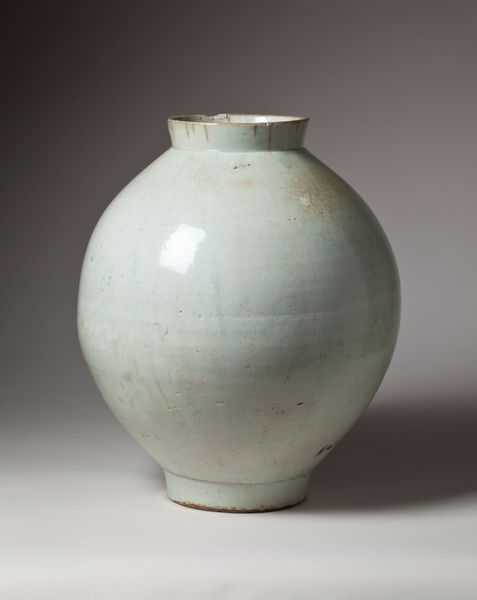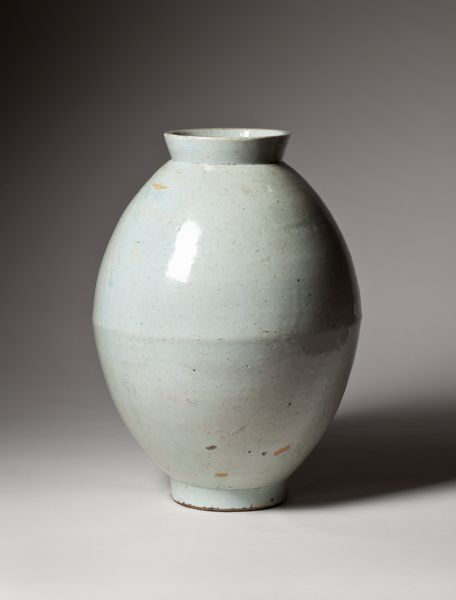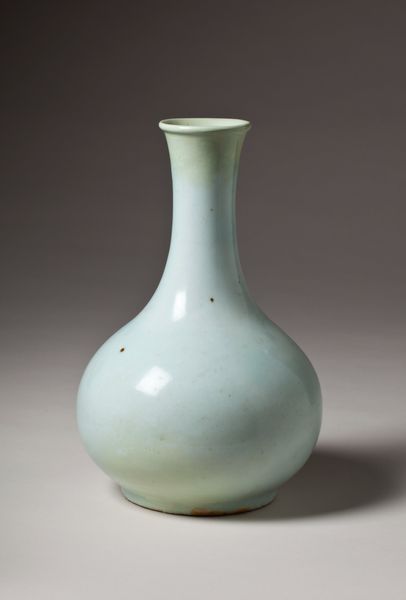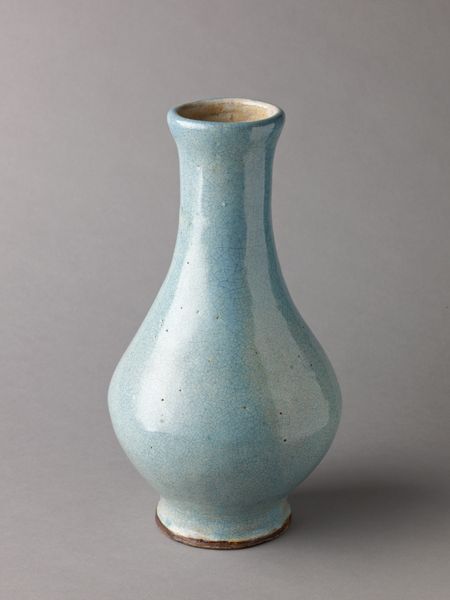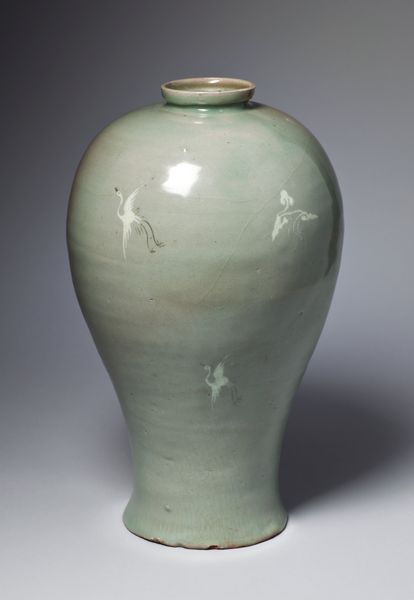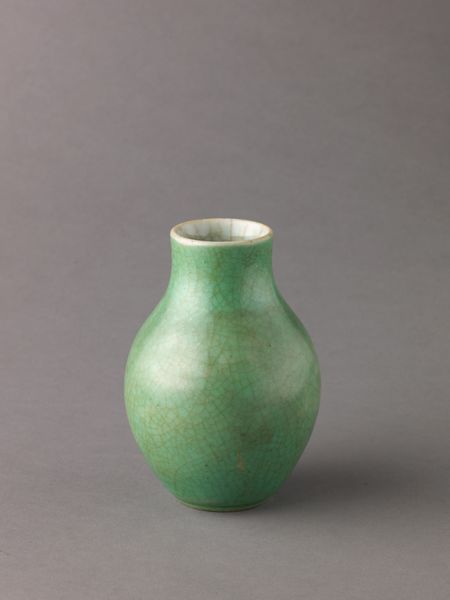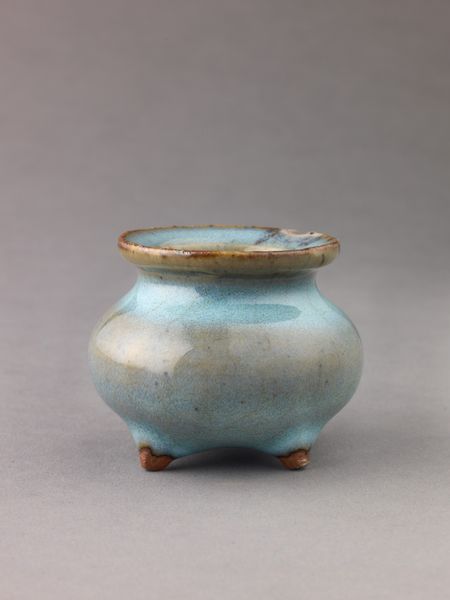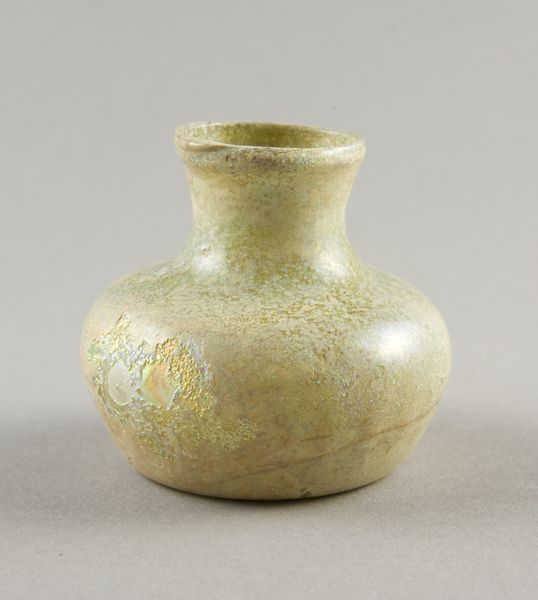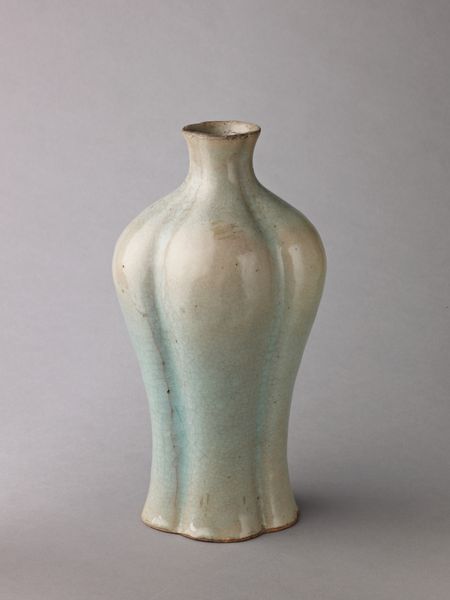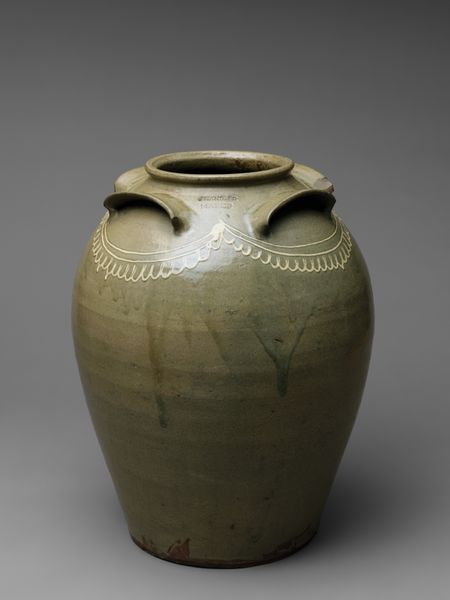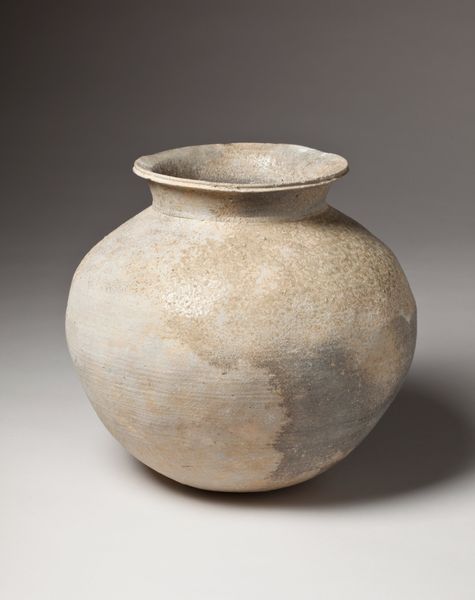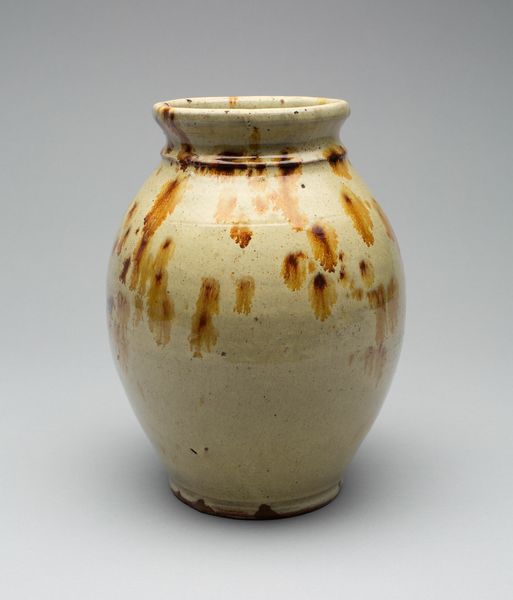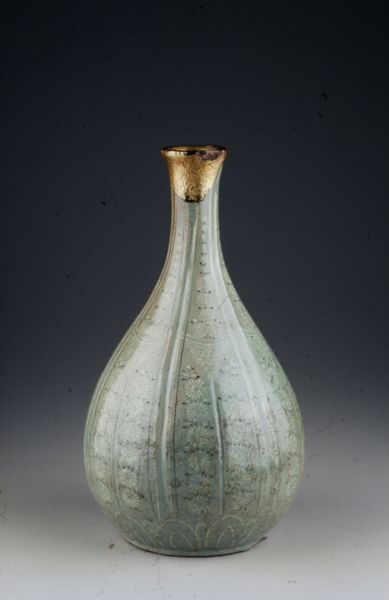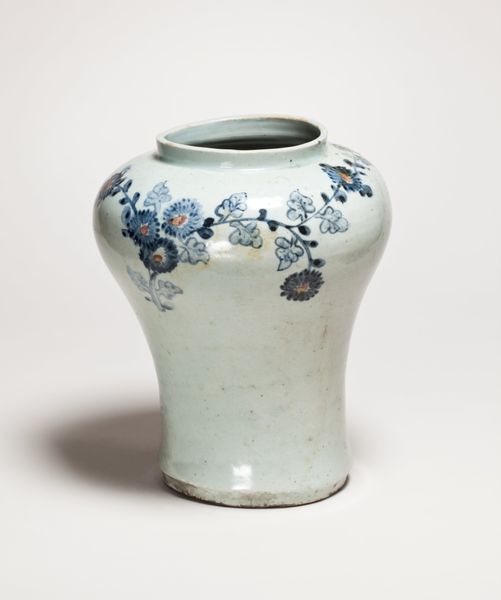
ceramic, earthenware
#
asian-art
#
ceramic
#
vessel
#
earthenware
#
ceramic
Dimensions: 15 x 11 1/2 in. (38.1 x 29.21 cm)
Copyright: Public Domain
Curator: The piece before us, dating from the 18th century, is a Korean white maebyeong, a ceramic vessel now housed here at the Minneapolis Institute of Art. Editor: Wow. It radiates such serene energy. I'm immediately struck by its gentle curves—soft, pear-like form. It feels grounded and comforting. A really lovely kind of imperfection, it breathes, doesn't it? Curator: Indeed. Maebyeong were traditionally used to hold liquids, such as wine or plum juice, but they've also taken on an important place in ceramic history, shifting over time from utility to display and collecting. Editor: It has a subtle kind of monumentality. Knowing it was for wine adds something. There's something profound about that: such a humble object but treated with such care in its form. What sort of social class might have used it? Curator: Vessels like this "white maebyeong," while seemingly simple, reflect sophisticated ceramic techniques prized by the Joseon dynasty's elite. Such objects acquired symbolic value tied to social standing and Confucian ideals of restraint and refinement. Editor: It really does express restraint. Looking at the unadorned surface, it invites such calm contemplation, doesn't it? This muted palette and tactile, earthy materiality—it connects to nature. Did this "humble aesthetic" carry certain symbolism? Curator: White porcelain in this period signaled a detachment from the flamboyance associated with earlier dynasties. It speaks to austerity, self-cultivation, and a reverence for scholar ideals. Editor: That really enhances my understanding of the vessel's role! It makes one question how taste shifts and reinforces cultural and social power, you know? What was prized and by whom is always in flux... Curator: Absolutely, this seemingly simple ceramic vessel carries a dense matrix of aesthetic and cultural significance related to taste hierarchies, social mobility, and shifting political ideologies. Editor: Considering those subtle nuances makes the experience that much more rewarding, doesn’t it? Curator: I agree. Every time, my encounter feels refreshed by something new!
Comments
minneapolisinstituteofart almost 2 years ago
⋮
From the founding of the Joseon dynasty at the end of the 14th century, Korean potters produced finely crafted, undecorated white wares which reflected the austere tastes associated with Confucianism, the official ideology of the Joseon rulers. By the 18th century, however, imperfectly formed and casually glazed vessels such as this were being produced for use by all levels of Korean society. The pleasing informality and naturalness of such objects were admired by Japanese tea masters who collected Korean ceramics in great number.
Join the conversation
Join millions of artists and users on Artera today and experience the ultimate creative platform.
